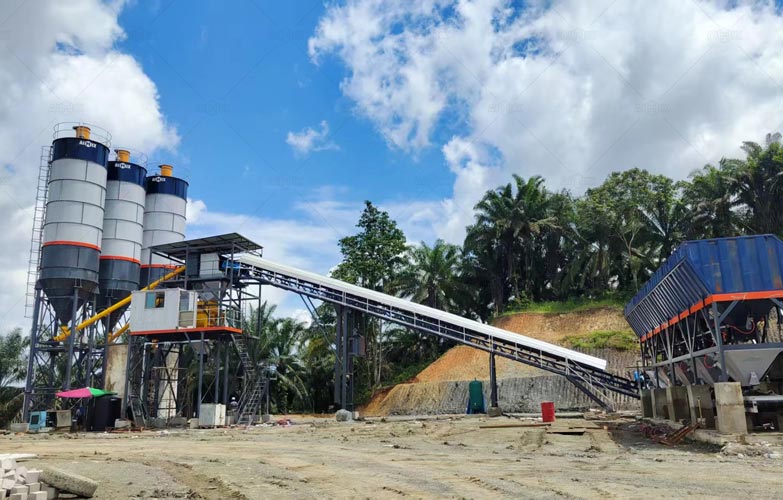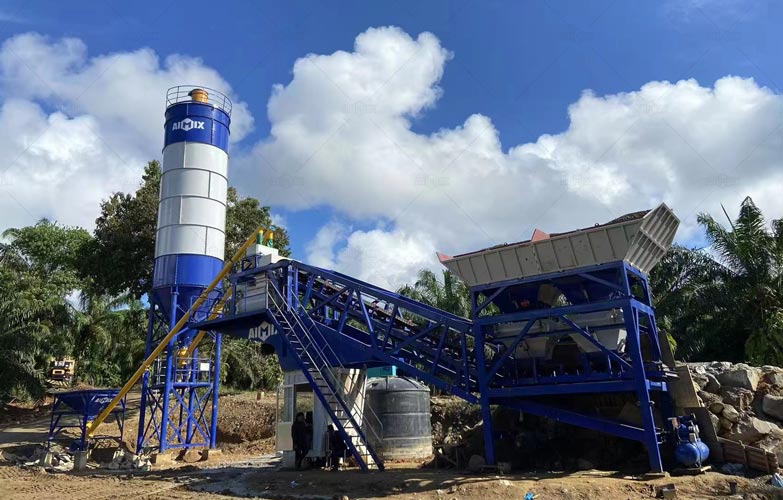
The Peruvian construction industry is entering a new stage of competitiveness. Rapid urban expansion, infrastructure modernization, and the growth of private industrial projects are all driving demand for stable, high-quality concrete production. In this context, many companies are now discovering that investing in a modern concrete plant Peru(planta de concreto Perú) is no longer just an equipment upgrade—it is becoming a strategic path to improve profit margins, reduce operational risks, and accelerate project delivery. Whether through a fixed concrete mixing plant or a flexible mobile concrete plant, Peruvian contractors are gaining new advantages in efficiency, compliance, and long-term cost control.
Peru’s construction sector faces both opportunity and pressure. Major factors include accelerating infrastructure investments, rising quality standards in public tenders, and the growing need for speed in private industrial and housing projects. Traditional on-site concrete mixing methods often lead to unstable mix ratios, waste of raw materials, and higher long-term labor costs. These issues directly affect profit margins. As construction clients push for higher reliability and faster execution, modern concrete plants are becoming the logical solution for companies seeking to stay competitive.

One of the strongest reasons Peruvian companies are modernizing equipment is the significant boost in production efficiency. A modern concrete mixing plant(planta mezcladora de concreto) automates most steps—including material weighing, batching, mixing, and discharge—resulting in faster cycle times and more consistent output. This efficiency helps companies:
For companies handling multiple projects across regions, choosing a mobile concrete plant adds even greater flexibility. It can be relocated quickly and set up near the jobsite, cutting transportation and logistics costs.
Concrete quality directly influences project profitability. Rejected batches, structural issues, and delays due to inconsistent concrete all increase hidden costs. Modern plants provide precise control over mix designs and real-time monitoring of aggregate moisture, cement ratios, and output volume. With this level of control, Peruvian contractors can:
When companies supply better concrete, they reduce risk and improve long-term profitability.
Today’s modern plants come with advanced automation systems that monitor production volume, material usage, energy consumption, and maintenance needs. This real-time visibility is especially valuable in Peru, where labor and material prices are rising. Digital monitoring enables companies to:
Automation does not replace skilled workers—it enhances their productivity and ensures consistent, predictable results.
Peru’s diverse geography—mountains, high-altitude regions, desert coastal zones, and rainforest areas—means companies must choose equipment that fits their operating environment.
A fixed concrete mixing plant is ideal for large-scale or continuous projects such as:
Its advantages include higher capacity, stronger stability, and long-term cost efficiency.
For contractors operating across regions—such as mining companies in the Andes or road builders in rural provinces—a mobile concrete plant(planta de concreto movil) offers unmatched mobility. Benefits include:
In Peru, where projects are often widely distributed, mobile plants have become a popular investment.

Investing in a modern concrete plant Peru delivers returns far beyond immediate efficiency gains. Over the long term, companies strengthen their industry positioning by:
These factors collectively improve profit margins and open doors to more complex, higher-value contracts.
As Peru’s construction industry advances, companies that invest in modern concrete plants gain a clear edge in productivity, quality, and profitability. Whether through a high-capacity fixed plant or a versatile mobile concrete plant, the ability to produce consistent, compliant, and cost-efficient concrete is becoming a key competitive advantage. For Peruvian contractors aiming to grow sustainably and build a stronger market position, upgrading to modern concrete technology is no longer optional—it is a strategic investment in long-term success.